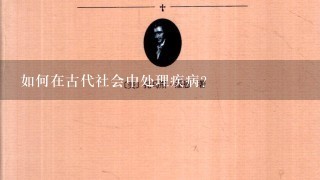如何在古代社会中处理疾病?

Ancient Medical Practices
1. Traditional Medicine:
- Herbal remedies: Using plants and herbs for medicinal purposes, such as teas, poultices, and tinctures.
- Animal remedies: Consuming meat and dairy products believed to possess healing properties.
- Physical therapy: Exercise and massage techniques to improve circulation and relieve pain.
2. Acupuncture:
- Fine needles inserted into specific points on the body.
- Used for pain relief, fever, and inflammation.
3. Herbal Medicine:
- Extracting and preparing plant materials for medicinal use.
- Used for a wide range of ailments, including respiratory infections, digestive problems, and skin conditions.
4. Traditional Surgical Techniques:
- Suturing wounds and fractures.
- Using bone fragments to fill holes in bones.
- Applying hot compresses to relieve pain and inflammation.
5. Herbal Preparations:
- Preparing herbal extracts by simmering plants in water.
- Using these extracts for medicinal purposes.
6. Traditional Medications:
- Herbal concoctions and poultices.
- Animal-based remedies, such as milk and honey.
7. Traditional Diagnostics:
- Physical examination and observation.
- Using signs and symptoms to identify diseases.
Challenges in Ancient Medical Practices:
- Limited knowledge and understanding of diseases and treatments.
- Availability of resources, such as herbs and animals, could be limited.
- Hygiene and sanitation practices were primitive.
- Cultural and social factors could influence treatment decisions.
Conclusion:
Ancient medical practices were diverse and often relied on traditional methods and practices. While some techniques were effective, others were limited by the available resources and knowledge. Despite these challenges, ancient medicine offers valuable insights into the understanding and treatment of diseases in ancient societies.





































































